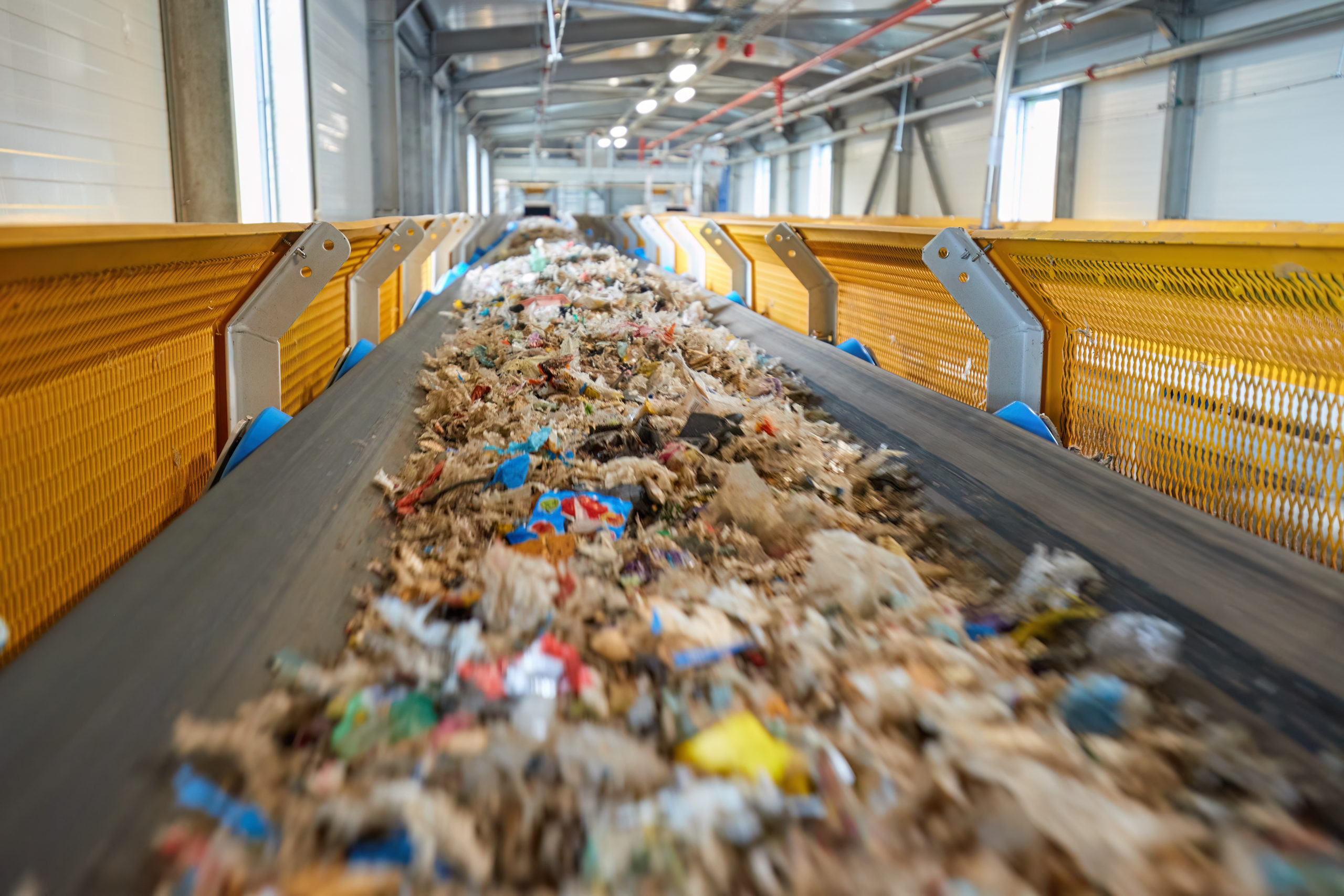Waste generation around the world is rapidly increasing, leading to problems like overburdened landfills, greenhouse gas emissions, and pollution. At the same time, energy demand continues to rise globally, much of which is still met through fossil fuels that drive climate change.

There’s an urgent need to implement better waste management systems and transition to clean, renewable energy sources. One solution to both issues is converting biomass waste from municipal, agricultural, and industrial sources into usable energy through advanced technologies.
Diverting biomass waste from landfills and using it productively for energy generation has major potential upsides. Now, let’s explore the magic of waste-to-energy.
Advanced Conversion Technologies
Several innovative methods for converting biomass to energy are emerging, aiming to be more efficient and sustainable. Also, companies like MV Technologies are developing systems designed to control harmful biogas emissions for proper compliance with industry standards all throughout the waste-to-energy process.
- Direct Combustion
The most basic way to utilize biomass for energy is through direct combustion. This involves burning woody biomass materials like firewood, wood chips, wood pellets, etc., in boilers to generate hot air, hot water, or steam. The heat can then be used directly for heating purposes or to drive turbines to generate electricity.
- Anaerobic Digestion
Organic waste materials like crop residues or animal manure can be converted into biogas through anaerobic digestion by microorganisms in oxygen-free tanks called digesters. Biogas is comprised mainly of methane and carbon dioxide, which can be used similarly to natural gas for heating, electricity generation, or transportation fuel.
- Gasification
Gasification involves heating biomass to high temperatures with some oxygen, generating syngas, which is primarily hydrogen and carbon monoxide gases that can fuel modified engines and turbines or be further processed into transportation fuels. This method enables higher efficiency electricity production from biomass compared to direct combustion.
Pyrolysis heats biomass without oxygen, producing three products—biochar, bio-oil, and syngas. Slow pyrolysis maximizes a stable biochar used to enrich soils. Fast pyrolysis yields more bio-oil, which, after upgrading, can replace heavy fuel oil and diesel. The process flexibility and relative simplicity enable decentralized small-scale plants.
- Hydrothermal Liquefaction
Wet biomass like algae is converted into bio-crude oils and fuels through hydrothermal liquefaction. Biomass is processed in hot, pressurized water, breaking it into oily components without thoroughly drying the feedstocks. This is a less intensive process, ideal for wet waste streams.
Environmental And Sustainability Benefits
Utilizing biomass, an important renewable energy source, for energy can offer critical environmental advantages over relying solely on fossil fuels. Here are some of them:
- Renewable and Abundant Resources
Biomass is a renewable resource since plants and organic matter can be regrown over relatively short timescales to reabsorb the carbon emitted. Therefore, sustainably sourced biomass can provide abundant feedstock for energy production indefinitely.
- Low Carbon Energy
Energy derived from biomass releases carbon recently captured by the plants grown, achieving near carbon neutrality over time. This helps mitigate human-induced climate change impacts from rising carbon dioxide emissions caused by burning fossil fuels.
- Alternative To Fossil Fuels
Biomass is a promising alternative to fossil fuels, especially if it can be produced in large quantities and at low costs. And it has yet to reach its full potential in the future of the waste-to-energy process.
In regions with limited biomass resources, this renewable carbon source can directly replace dependence on coal, oil, and natural gas for electricity, heating, and transportation with less pollution. This improves energy, self-reliance, and security.
The Future Of Waste-Based Bioenergy
Given that the process of transforming biomass into energy has essential benefits, some further innovations can be expected in the coming years.
- Technology Improvements
Waste-to-energy technologies will continue advancing to lift efficiencies and output. Optimizing processes like pyrolysis, gasification, anaerobic digestion, and more can better tap the embedded energy in waste. Improved designs can extract even more usable power and fuel from scrap materials.
- Integrated Biorefineries
Dedicated biorefineries will process multiple waste streams in one location using various conversion technologies. Optimized to maximize energy generation, they can take food waste, plastics, fats, sludges, and other discarded materials and generate electricity, biofuels, heat, and every energy product.
- Supportive Policies
Government incentives and waste management regulations must better promote waste-based energy systems. Policies can spur infrastructure development and override current economic disincentives around waste-to-energy. These include recognizing waste’s renewable energy potential within clean energy standards and climate change mitigation plans.
Final Thoughts
All in all, biomass holds promising potential as a future pillar of renewable energy. If technologies, infrastructure, economics, policies, and environmental safeguards can be established to utilize disposal more productively, then it can support the Earth’s quest for sustainable and wise use of resources.
Developing waste-to-energy systems remains an ongoing process, but the environmental and economic benefits compel advancement in the field. With the power generated sustainably from disposed biomass, countries worldwide may come closer to energy independence and security while reducing impacts on climate.
- SEO Powered Content & PR Distribution. Get Amplified Today.
- PlatoData.Network Vertical Generative Ai. Empower Yourself. Access Here.
- PlatoAiStream. Web3 Intelligence. Knowledge Amplified. Access Here.
- PlatoESG. Carbon, CleanTech, Energy, Environment, Solar, Waste Management. Access Here.
- PlatoHealth. Biotech and Clinical Trials Intelligence. Access Here.
- Source: https://usgreentechnology.com/future-of-waste-transforming-biomass-into-energy/
- :has
- :is
- a
- abundant
- achieving
- advanced
- advancement
- advancing
- advantages
- After
- Agricultural
- Aiming
- AIR
- All
- also
- alternative
- an
- and
- animal
- ARE
- around
- AS
- At
- basic
- BE
- benefits
- Better
- biogas
- biomass
- both
- Breaking
- burning
- but
- by
- called
- CAN
- captured
- carbon
- carbon dioxide
- Carbon monoxide
- Carbon Neutrality
- caused
- change
- Chips
- clean
- clean energy
- Climate
- Climate change
- closer
- Coal
- come
- coming
- coming years
- Companies
- compared
- compliance
- components
- Comprised
- continue
- continues
- control
- Conversion
- converted
- converting
- Costs
- countries
- critical
- crop
- Current
- decentralized
- Demand
- dependence
- Derived
- designed
- designs
- developing
- Development
- diesel
- direct
- directly
- disposal
- drive
- Economic
- Economics
- efficiencies
- efficiency
- efficient
- electricity
- embedded
- emerging
- Emissions
- enable
- enables
- energy
- Engines
- enrich
- environmental
- especially
- essential
- established
- etc
- Even
- Every
- expected
- explore
- extract
- FAST
- field
- Flexibility
- food
- For
- fossil
- fossil fuels
- from
- Fuel
- fuels
- full
- further
- future
- GAS
- generate
- generated
- generating
- generation
- Globally
- Green
- greenhouse gas
- Greenhouse gas emissions
- grown
- harmful
- heavy
- helps
- here
- High
- higher
- holds
- HOT
- HTTPS
- hydrogen
- ideal
- if
- Impacts
- implement
- important
- improved
- improves
- in
- Incentives
- include
- increasing
- independence
- industrial
- industry
- industry standards
- Infrastructure
- innovations
- innovative
- into
- involves
- issues
- IT
- ITS
- large
- leading
- less
- like
- Limited
- location
- Low
- magic
- mainly
- major
- management
- materials
- Matter
- max-width
- Maximize
- maximizes
- May..
- met
- methane
- method
- methods
- Mitigate
- mitigation
- modified
- more
- more efficient
- most
- much
- multiple
- municipal
- must
- Natural
- Natural Gas
- Near
- Need
- neutrality
- now
- of
- offer
- Oil
- oils
- on
- ONE
- ongoing
- optimized
- optimizing
- or
- organic
- Other
- output
- over
- override
- Oxygen
- Pillar
- plans
- plants
- plastics
- plato
- Plato Data Intelligence
- PlatoData
- policies
- Pollution
- potential
- power
- primarily
- problems
- process
- processed
- processes
- Produced
- producing
- Product
- Production
- promising
- promote
- proper
- provide
- purposes
- quest
- rapidly
- reach
- recently
- recognizing
- reducing
- regions
- regulations
- relative
- relatively
- Releases
- relying
- remains
- Renewable
- renewable energy
- replace
- resource
- Resources
- Rise
- rising
- s
- safeguards
- same
- security
- Short
- Similarly
- simplicity
- since
- slow
- solely
- solution
- some
- Source
- sourced
- Sources
- stable
- standards
- Steam
- Still
- streams
- support
- Sustainability
- sustainable
- sustainably
- Systems
- Take
- Tanks
- Tap
- Technologies
- that
- The
- The Future
- the world
- Them
- then
- therefore
- These
- they
- this
- thoroughly
- three
- Through
- throughout
- time
- to
- transforming
- transition
- transportation
- urgent
- usable
- use
- used
- using
- utilize
- various
- Waste
- Water
- Way..
- which
- while
- will
- WISE
- with
- within
- without
- wood
- world
- worldwide
- years
- yet
- yields
- zephyrnet








